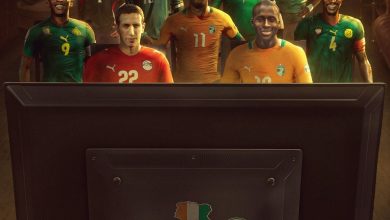The Untold Story of Walt Disney: A Legacy Beyond Animation

Over a century ago, Walter “Walt” Disney, along with his brother Roy Disney, co-founded Walt Disney Productions, setting the stage for what would become one of the most beloved and influential entertainment companies in the world.
From the creation of the iconic Mickey Mouse to the establishment of Disneyland and Walt Disney World, Walt’s vision and creativity have left an indelible mark on popular culture.
Early Life: A Humble Beginning in Chicago
Walt Disney’s Birthplace
Walt Disney was born in 1901 in a small, wooden cottage in Chicago, designed and built by his parents, Elias and Flora Disney.
The house, costing $800 to construct—a considerable sum at the time—still stands today, meticulously restored to its original state.
Childhood Dreams: Peter Pan and Beyond
Walt’s imaginative spirit was evident early on. As a young boy, he played Peter Pan in a school play, foreshadowing his future in animation and storytelling. This early performance was nearly four decades before the beloved animated classic “Peter Pan” would grace the big screen.
The Road to Animation: Trials and Tribulations
High School Dropout Turned Red Cross Volunteer
At 16, Walt dropped out of high school, eager to join the Army during World War I. Though he was underage, he volunteered with the Red Cross, serving in Europe and gaining experiences that would later influence his work.
First Job and First Failure
Returning to the U.S., Walt worked as an artist for a Kansas City advertising agency, where he famously remarked to his Aunt Margaret, “Auntie, they’re paying me to draw!” However, this joy was short-lived; he was laid off after just a month.
In 1920, Walt launched his first animation studio, Laugh-o-Gram, in Kansas City. Despite his efforts, the studio went bankrupt within a year, a setback that would shape his resilient approach to future ventures.
Mickey Mouse and the Rise of Disney
Oswald the Lucky Rabbit and Mickey’s Birth
Walt’s first significant creation was Oswald the Lucky Rabbit, which he developed under an agreement with Universal Pictures. In 1928, after losing the rights to Oswald, Walt and his team created Mickey Mouse, a character that would become a global icon. Interestingly, Mickey was initially named Mortimer Mouse until Walt’s wife, Lillian, suggested the change.
The Voice Behind Mickey
From Mickey’s debut in 1929 until 1947, Walt himself voiced the character, ensuring Mickey’s persona resonated with audiences.
Pioneering Animation: Breaking New Ground
First Full-Color Technicolor Cartoon
In 1932, Walt produced “Flowers and Trees,” the first-ever full-color Technicolor cartoon. Disney had exclusive rights to this revolutionary process until the end of 1935, setting his work apart from all others in the industry.
Snow White and the Seven Dwarfs: A Bold Gamble
Walt faced skepticism when he set out to create “Snow White and the Seven Dwarfs,” the first feature-length animated film. Dubbed “Disney’s Folly” by industry insiders, the film’s success silenced critics, earning Walt an honorary Academy Award and cementing his reputation as a trailblazer.
Personal Struggles and Triumphs
A House for His Parents: Tragedy Strikes
The success of “Snow White” enabled Walt to buy a house for his parents in North Hollywood. Tragically, his mother, Flora, died of carbon monoxide poisoning due to a faulty furnace, a loss that haunted Walt for the rest of his life.
World War II: Propaganda Films and Anti-Communism
During World War II, Walt’s studio produced propaganda cartoons for the U.S. government. Later, during the Red Scare, he became an outspoken opponent of communism, even testifying before the House Un-American Activities Committee.
Also Read: Disney+ and The Simpsons Unite for Star Wars Short ‘May the 12th Be With You’
Legacy and Lasting Impact
Presidential Medal of Freedom
In 1964, President Lyndon B. Johnson awarded Walt the Presidential Medal of Freedom, recognizing his immense contributions to American culture.
Love for Trains: From Hobby to Theme Parks
Walt’s fascination with trains began in his youth and continued throughout his life. He even built a miniature railroad around his Los Angeles home and incorporated railroads into Disneyland’s design.
Disneyland: A Dream Realized
The idea for Disneyland was born as Walt watched his daughters ride a merry-go-round in Griffith Park. He envisioned a place where families could enjoy attractions together, leading to the creation of Disneyland in 1955 and later, Walt Disney World.
Mysteries and Myths
Secret Apartment and Audio-Animatronics
Walt had a secret apartment above the firehouse on Main Street in Disneyland, a private retreat for his family. He also pioneered audio-animatronics, first showcased at the 1964 World’s Fair with a lifelike Abraham Lincoln figure.
Cryogenics Myth
Despite persistent rumors, Walt was not cryogenically frozen. He was cremated, with the urban legend debunked by numerous credible sources.
Conclusion: The Everlasting Magic of Walt Disney
Walt Disney’s legacy is one of imagination, perseverance, and innovation. From humble beginnings to creating an empire, his journey is a testament to the power of dreams and creativity. His work continues to inspire and entertain millions worldwide, proving that magic truly exists if we believe.
FAQs About Walt Disney
1. Was Walt Disney really a high school dropout?
Yes, Walt Disney dropped out of high school at 16 to join the Army, but he ended up volunteering with the Red Cross instead due to his age.
2. What was Walt Disney’s first major cartoon character?
Oswald the Lucky Rabbit was Walt Disney’s first major character before he lost the rights and created Mickey Mouse.
3. Did Walt Disney voice any characters?
Walt Disney voiced Mickey Mouse from the character’s debut in 1929 until 1947.
4. What inspired Walt Disney to create Disneyland?
Walt was inspired to create Disneyland while watching his daughters ride a merry-go-round in Griffith Park, envisioning a place where families could enjoy attractions together.
5. Is it true Walt Disney was cryogenically frozen?
No, Walt Disney was not cryogenically frozen. He was cremated, and the cryogenics story is a myth.
6. How many Academy Awards did Walt Disney win?
Walt Disney won 32 Academy Awards, holding the record for the most Oscars won by an individual.
7. What was Walt Disney’s first full-color cartoon?
“Flowers and Trees” was the first full-color Technicolor cartoon produced by Walt Disney in 1932.





